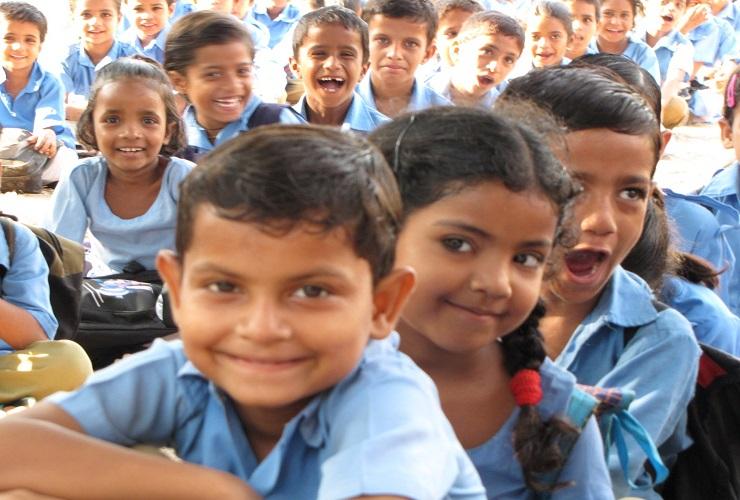ASIACALLING
The world’s largest school lunch program
"A government-led free lunch program giving kids an incentive to go to school, by filling their bellies. "
Jasvinder Sehgal

India has been called the hunger capital of the world, where a quarter of people don’t have enough to eat. And children are the worst affected: Four in every ten Indian kids are malnourished or stunted, according to the United Nations, India.
But a government-led free lunch program giving kids an incentive to go to school, by filling their bellies.
As Jasvinder Sehgal reports, the initiative is epic in scale: providing lunches for almost a hundred million kids in over one million schools.
Children are learning their maths tables by heart, in the government primary school, Mehrauli, 52 miles from the western Indian city of Jaipur.
Seven year old Nisha Prajapat tells me she loves school.
“My school and studies are very good,” she said. “We get a different kind of lunch every day at school.”
Nisha is one of seven children. Her father is sick with tuberculosis, and so finding money for basics like food, is difficult. She looks forward to the lunches at school.
“We are generally served porridge, Indian flat bread, pulses and rice for lunch,” Nisha told me.

After maths, it’s time to learn the Hindi alphabet. 38-year-old Ashok Kumar is the teacher.
“After the introduction of the mid-day meal scheme, the attendance of children has improved significantly. The students that come to Government schools belong to very poor families, to the extent that their parents are unable to feed them,” Ashok explained. “They get good food here, so they love to come to school.”
As students assemble for lunch, the fragrance of lentils and rice wafts all over the school.
32 years old Manju Devi is the in charge of mid-day meal scheme. She says students now find it easier to concentrate, and classrooms are filling up.
“The food that is supplied to schools is very nutritious. It’s delicious too, so children can eat until their stomachs are full,” Devi said. “I am seeing a change in their physical and mental health because of this food.”

In 2001 India’s Supreme Court ordered all state governments to provide free school meals to children aged 6 to 14.
In many states, lunch has become a one-stop shop for children's health. The kids also get vitamin A, iron, folic acid and de-worming tablets with their meals.
The food is supplied by Akshaypatra Foundation. The NGO feeds 1.6 million children in almost fourteen thousand schools across 12 Indian states.
“This is the largest kitchen of India, which spreads across 40 thousand square feet, said R. Govind Dasa, the Chairman of Akshaypatra’s Jaipur kitchen.
“We cook food for 150 thousand children in just three hours through machines. Three hundred thousand Indian flat breads are prepared every day.”

According to UNESCO, 1.4 million Indian children skip school just so they can earn enough money to buy one meal in a day.
40 year old Rama Devi has a daughter at Mehrauli school. And she tells me the school lunch program has made a massive difference to her family. It means she’s been able to keep two of her children living with her.
“I have four children and on the death of my husband, my sister took away two of them as I was unable to feed them. The two other children study here and get free lunch,” she said.

- India education
- India malnutrituion
- India nutrition
Komentar
KBR percaya pembaca situs ini adalah orang-orang yang cerdas dan terpelajar. Karena itu mari kita gunakan kata-kata yang santun di dalam kolom komentar ini. Kalimat yang sopan, menjauhi prasangka SARA (suku, agama, ras dan antargolongan), pasti akan lebih didengar. Yuk, kita praktikkan!